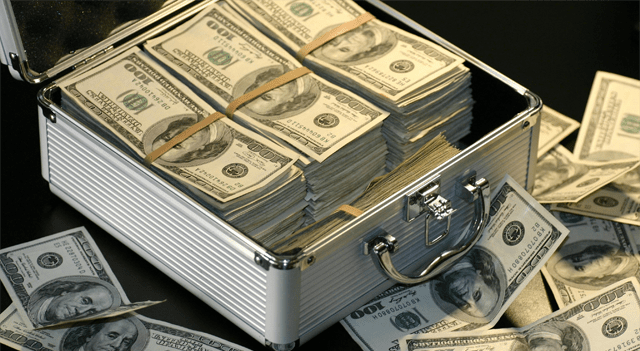The U.S. dollar dipped slightly on Thursday but remained on track to notch its first monthly gain of 2025, buoyed by Federal Reserve Chair Jerome Powell’s firm tone on monetary policy during the latest Fed meeting.
At 03:00 ET (08:00 GMT), the Dollar Index — which measures the greenback against six major global currencies — eased 0.1% to 99.550. The index hovered near a two-month high and was on pace to end July with a rise of over 3%, marking its first positive month this year.
Fed Holds Steady, Powell Sends Hawkish Signal
Following its July policy meeting, the Federal Reserve kept interest rates unchanged, citing a “low” unemployment rate, a “solid” job market, and “somewhat elevated” inflation.
Despite political pressure from President Donald Trump to begin cutting rates, Powell struck a cautious tone and gave little indication of when policy might ease.
“Chair Powell’s press conference was hawkish,” analysts at ING wrote in a note. “He reiterated expectations for a short-lived inflationary impact and said a modestly restrictive policy was appropriate. He seemed to put himself on a collision course with President Trump by claiming the Fed was looking through inflation by not hiking.”
Rate-cut expectations have declined notably. CME’s 30-day Fed Funds futures now show a 45.7% chance of a September cut — a steep drop from 63.4% before the meeting.
However, there were divisions within the central bank. Governors Christopher Waller and Michelle Bowman, both appointed by Trump, voted in favor of a 25-basis-point cut, pointing to weakening labor market trends as justification.
Fresh labor data provided mixed signals. Private payrolls surpassed forecasts on Wednesday, while jobless claims — which have declined for six straight weeks — hint at underlying strength.
“Another data point worth noting is jobless claims, which have recently caught our attention after an unexpected six-week streak of declines. That’s the longest run since August-September 2022, and may be contributing to expectations of a resilient labour market,” ING added.
The market will now focus on the July nonfarm payrolls report due Friday.
Euro and Sterling Head Lower for the Month
The euro recovered some ground, with EUR/USD rising 0.4% to 1.1447 after slipping to a seven-week low the day prior. Even with Thursday’s bounce, the euro remained down nearly 3% for July.
In France, harmonised inflation for July came in slightly hotter than expected, rising 0.9% year-on-year, ahead of the 0.8% estimate.
Eurozone economic output rose modestly in Q2, but concerns remain about tepid growth and the impact of recent U.S. tariffs.
“If the first leg of the EUR/USD correction was driven by the grim growth prospects for the eurozone after the EU-US trade deal, the drop to 1.14 was led by the Fed’s hawkish repricing,” said ING.
“In our view, risks remain on the downside for EUR/USD, even though positioning is now looking considerably less stretched after the squeeze of dollar shorts since the start of the week.”
Sterling also remained under pressure. GBP/USD inched up 0.1% to 1.3253 but was still near 10-week lows and set for a nearly 3% monthly decline.
Yen Softens After BOJ Holds Rates and Raises Forecasts
In Japan, the yen slipped, with USD/JPY down 0.2% to 149.28, after the Bank of Japan kept rates unchanged — as widely expected.
The BOJ lifted its inflation and GDP projections for the year, with updated core inflation estimates well above earlier targets.
Still, the central bank signaled that real interest rates remained low, and reiterated that further tightening could be on the table if its economic outlook holds.
Elsewhere, AUD/USD advanced 0.5% to 0.6466, paring earlier losses. The Chinese yuan remained flat, with USD/CNY steady at 7.1931 after underwhelming economic data.
July purchasing managers’ index figures showed both manufacturing and services sectors contracting more than expected, amid disruptions from extreme weather events.
This content is for informational purposes only and does not constitute financial, investment, or other professional advice. It should not be considered a recommendation to buy or sell any securities or financial instruments. All investments involve risk, including the potential loss of principal. Past performance is not indicative of future results. You should conduct your own research and consult with a qualified financial advisor before making any investment decisions.
